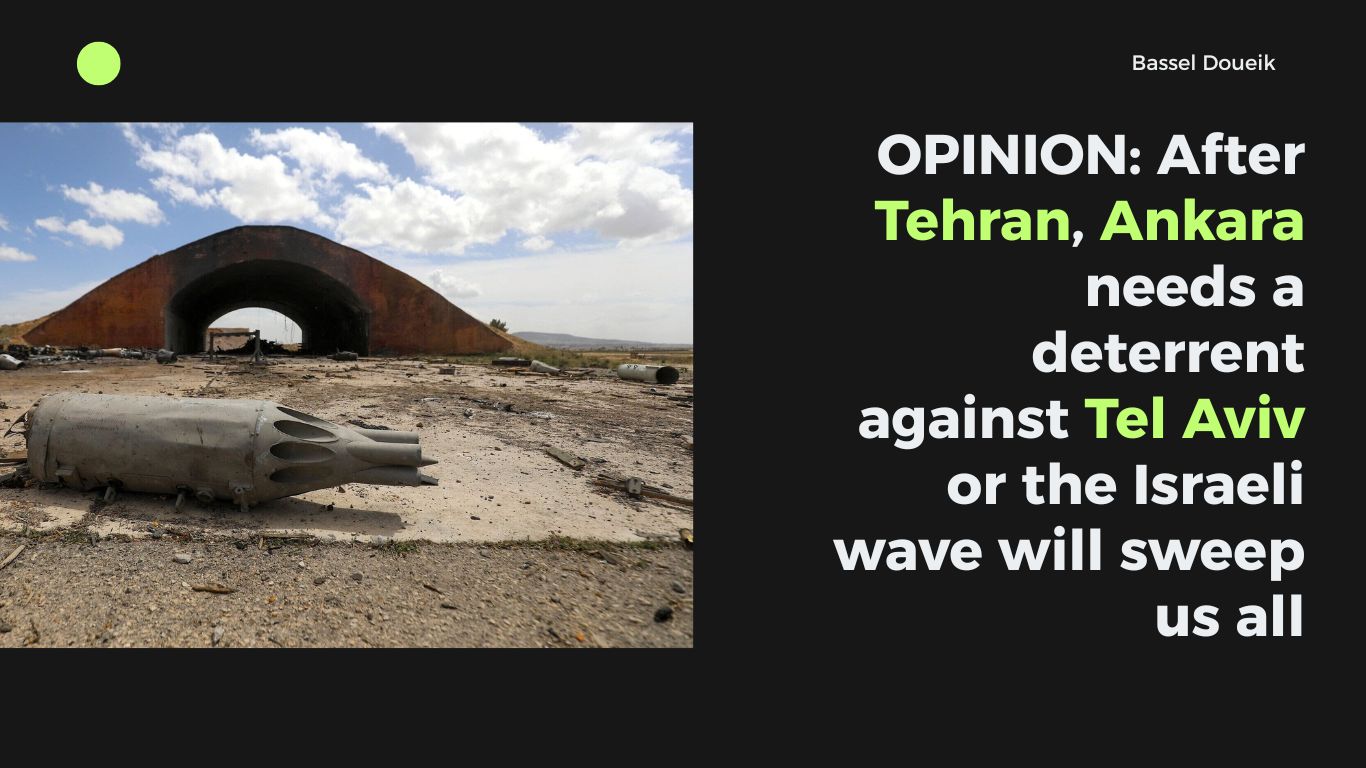


After Tehran, Ankara needs a deterrent against Tel Aviv or the Israeli wave will sweep us all
July 24, 2025
A-
A+
The latest Israeli-Iranian war has demonstrated that Israeli air superiority has entered a new strategic dimension in the Middle East. Israel successfully conducted operations across seven active fronts, relying heavily on its most advanced and decisive asset: the Israeli Air Force (IAF). A clear testament to the IAF’s power can be traced back to 23 September 2024, during the Israel–Hezbollah war, when it executed an unprecedented aerial campaign—striking over 1,300 targets and deploying approximately 1,400 munitions within 24 hours.
The IAF commands a formidable fleet that includes more than 39 F-35I “Adir” stealth fighters and around 300 F-16 variants (in service since 1980), providing unmatched flexibility and reach. Complementing this are AH-64 Apache attack helicopters, including the locally modified “Peten” and “Saraf” variants, which deliver precision firepower and close air support. This multi-layered aerial capability positions the IAF as the dominant air force in the region, capable of projecting force rapidly and decisively in complex, multi-theater operations.
Compared to Israel, Turkiye’s Air Force (THK) does not operate any 5th-generation fighter jets (like the F-35) but fields a larger number of 4th-generation aircraft, commissioned back in 1987. Other fighters include the KAAN jet, which is expected to be in full service by 2029.
The gap between the IAF and THK is significant, this is mainly why Ankara is pushing to achieve two major deals in the short term. First, Erdogan’s good relations with the U.S. may help readmit Turkiye into the U.S. F‑35 Joint Strike Fighter program, from which it was expelled in 2019. In addition, a Memorandum of Understanding (MoU) signed between Turkey and the UK for the purchase of up to 40 Eurofighter Typhoon jets will support the modernization of the THK.
The acquisition of these capabilities is likely to help Ankara counterbalance Israel’s superiority in the Middle East by establishing air parity and creating a credible deterrent against the IAF. But is that enough? On a broader geopolitical scale, both countries have already clashed indirectly multiple times in Syria through proxy militias.
Another angle is the recent remarks by Turkish officials regarding developments in the region. For instance, President Recep Tayyip Erdoğan has emphasized Turkiye’s commitment to enhancing its ballistic missile capabilities as a key element of national defense and regional deterrence. Since 2023, he has announced plans to extend Turkey’s missile range from 565 km to 1,000 km and revealed the accelerated development of missiles capable of reaching up to 2,000 km. Notably, following the Iran-Israel war and at the 2025 International Defense Industry Fair, Turkiye unveiled the Tayfun Block 4 hypersonic missile with an 800 km range. President Erdoğan also highlighted the importance of expanding medium- and long-range missile production to respond to regional threats.
A new geopolitical architecture is unfolding in the Middle East, in which two regional powers, Israel and Turkiye, are shaping its boundaries, deconfliction lines, and deterrence equation. So, can Turkiye’s deterrence equation succeed where Iran’s has failed? Is Turkiye filling the power vacuum left by Iran’s setbacks in Syria, Lebanon, and Gaza? And finally, is the West’s agreement to arm Turkiye with advanced fighter jets a strategy to contain Israel’s unilaterality?
Read More
-
Phantom Deals: The Shell Companies Winning Syria’s Billion-Dollar Projects
-
Destruction and siege drive As-Sweida into a deepening humanitarian crisis
-
Is the Iranian regime in threat of collapse due to its economic challenges?
-
Tamara el-Zein: From Science Champion to Minister of the Environment
-
After Graham’s Beirut Visit: Tel Aviv Watches More Closely
